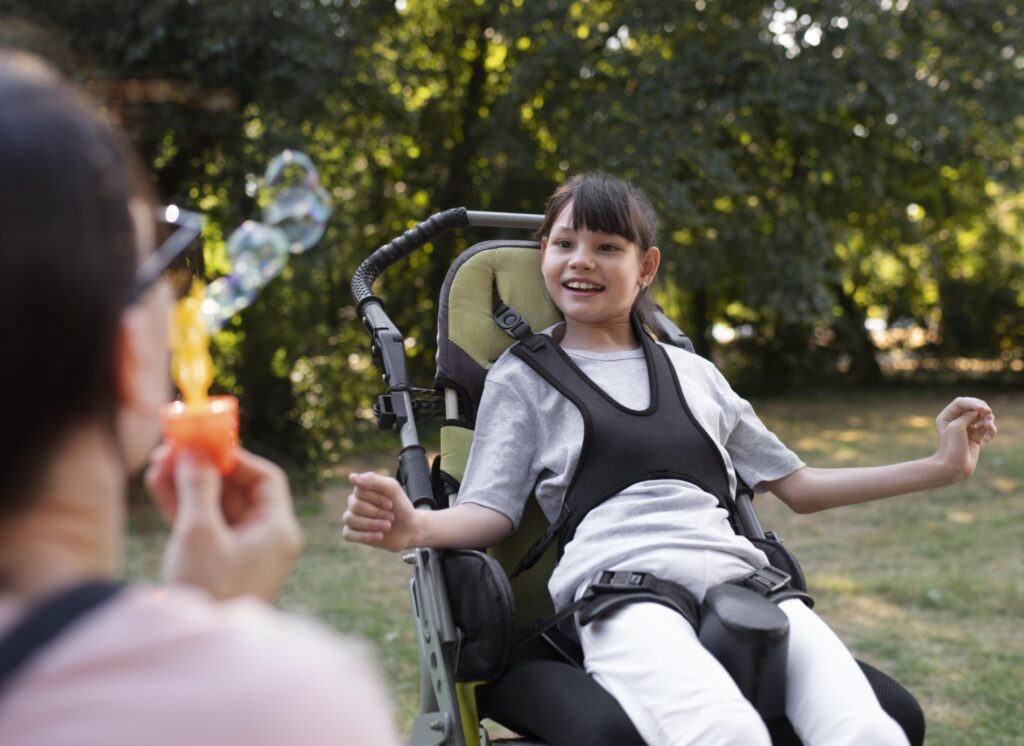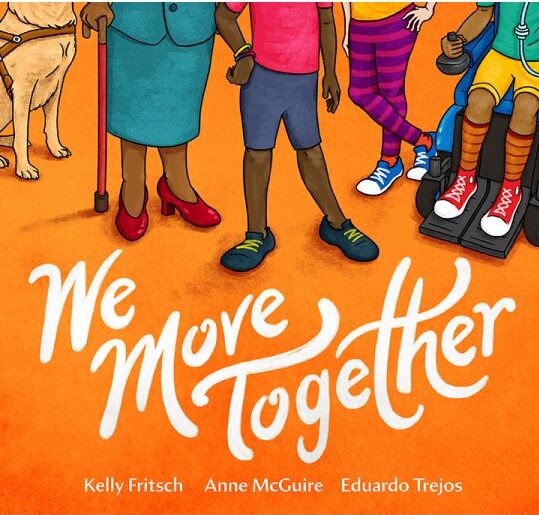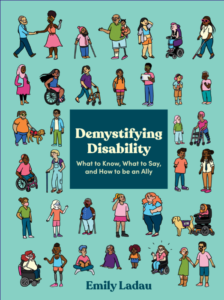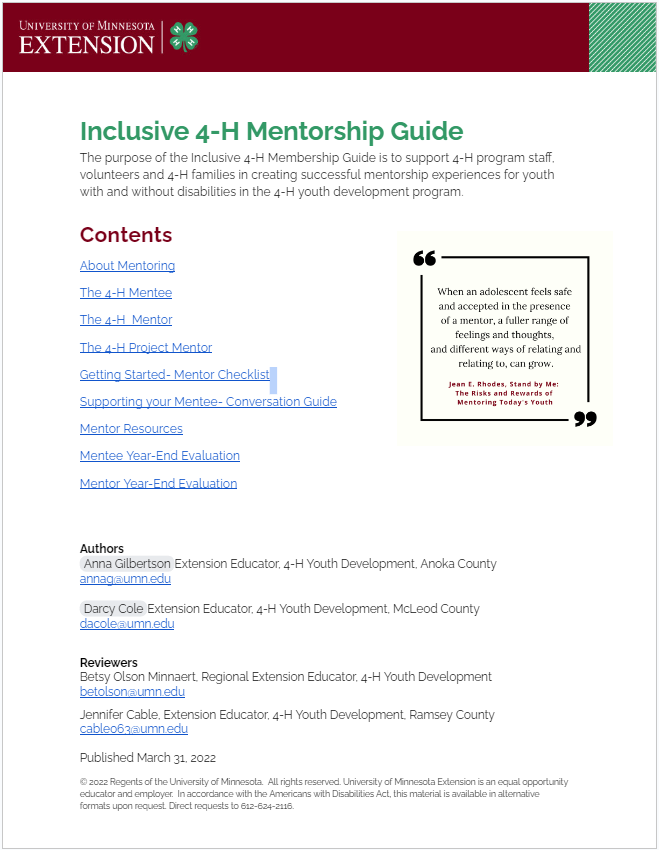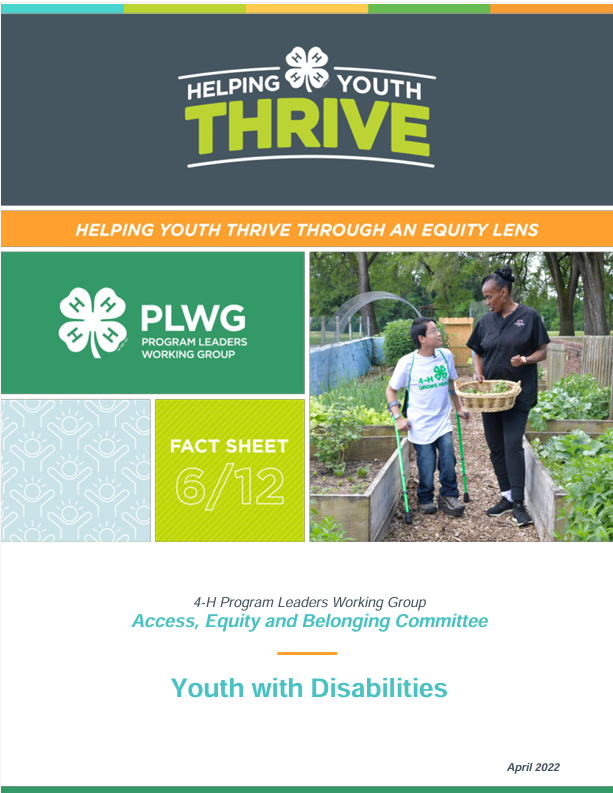Disability Self-Advocacy and Allyship Skills
Overview
In this phase of the Disability Awareness Curriculum Jams process, the group focused on training youth with and without diagnosed disabilities. The resources support youth in developing self-advocacy skills and peer advocacy or allyship skills.
Scope
Early on, the planning team identified a need for youth development volunteers and educators to increase their awareness and understanding of disability. The interviews added richness and depth, highlighting such concepts as:
- Need to include people with disabilities in programs—throughout planning, development, implementation, and reflection
- Value of encouraging authentic, direct interactions with people with disabilities
- Diversity of disabilities—both visible and invisible—as well as experiences within those disability categories
- Pride people with disabilities can and deserve to have in their strengths and individual identities
- Importance of increasing awareness of ableism, accessibility and universal design
Definition
Our definition of disability is adapted from the World Health Organization:
A disability is any condition of the body or mind that makes it more difficult for an individual to do certain activities and interact with the world around them. Personal and environmental factors including negative attitudes, inaccessible transportation and public buildings, and limited social support can impact the extent of disability.
How were these recommendations developed?
9 interviews with individuals with lived experience and/or specialized background related to disability.
2 themes emerged from interview data analysis—important content to share with learners and effective delivery methods for delivering that content.
8 content sub-themes and 11 delivery sub-themes formed the basis for criteria the group applied to a curriculum search process. The criteria were used to pre-screen and filter identified curriculum resources.
7 training curriculums were selected for further review and discussion.
12 youth, community adults, and educators with lived experience and/or specialized background with disability or disability awareness made the following curriculum recommendations.
Deep gratitude to all the youth, community adults, and educators who served as Interviewees, Jam Team Members, and Reviewers!
Resources
Educator Toolbox
The toolbox is made up of recommended resources that program leaders or educators can use to develop background knowledge on the topic.
Disability Tipsheet
Demystifying Disability: What to Know, What to Say, and How to Be an Ally
Demystifying Disability: What to Know, What to Say, and How to Be an Ally
Author: Emily Ladau
Description: This 167-page print book is also available in e-reader and audio formats. Topics include:
- Understanding disability generally and as part of a whole person
- A brief overview of disability history
- Ableism and disability
- Disability etiquette
- Disability in the media
Audience: Primarily adults
Recommendation: We recommend this book as a supplement to training. We felt it was an excellent resource for background information. It is intended for allies, which is in line with our primary audience. The discussion of intersectionality, authentic and personal stories, the politically neutral and accessible writing approach all contribute to a quality resource. As it is, it’s not a curriculum, though it may lend itself to a book study or serve as a supplemental resource for training. It provides good background information, especially when combined with a discussion guide to support deeper learning. We recommend this sample discussion guide from Kids Included Together (KIT).
4-H Facility Accessibility Checklist
4-H Facility Accessibility Checklist
Author: Darcy Cole, University of Minnesota Extension
Description: This 5-page checklist can help you assess a facility’s accessibility. It includes questions about:
- Access to the building
- Entrances, doorways, and pathways
- Restrooms
- Multi-level buildings
- Safety and convenience features
- Meeting rooms
Audience: Event organizers of all ages
Recommendation: We recommend using this resource to assess the accessibility of a building before planning events there. We appreciate that the checklist includes recommendations on how to address inaccessibility. The resource addresses barriers to people with physical disabilities such as people who use wheelchairs, blind and Deaf people. However, the resource does not address disabilities like multiple chemical sensitivity (which would require fragrance-free soap in the bathroom), chronic migraines (which could require alternatives to fluorescent lighting, such as incandescent or natural lights), or sensory processing disabilities (which could require low-sensory spaces). We encourage event organizers to also consider these issues when addressing the accessibility of buildings.
Making Outdoor Programs Accessible
Making Outdoor Programs Accessible
Author: Kathy Ambrosini, Mohonk Preserve
Description: A 70-page guide to making outdoor programs more inclusive and accessible. Topics include:
- Planning for inclusion
- Partnerships and challenges
- Accommodations: when, where, and how
- Environmental considerations and assistive strategies
- References and resources
Audience: Leaders of outdoor programs (rangers, youth leaders, educators, interpreters, or instructors)
Recommendation: We recommend this as a reference guide. Pieces from it could be adapted for training purposes. We like that the main focus is making outdoor spaces accessible, and that it offers concrete strategies, accommodations suggestions, ways of thinking about access, and more. The tools in the guide provide good information and elements to potentially use in trainings we develop. The resources at the end include some great suggestions we can build on as we create our own resource list.
Note: The most recent update to the resource was in 2005. As such, information and language should be considered and updated by those who wish to use it. Likewise, intersectionality and strategies for cultural relevance are not included. Making Outdoor Programs Accessible should be viewed as a resource to draw on rather than a training curriculum that covers all of what educators or volunteers need to understand about disability, inclusion, or accessibility.
Inclusive 4-H Mentorship Guide
Inclusive 4-H Mentorship Guide
Author: Anna Gilbertson and Darcy Cole, University of Minnesota Extension
Description: A 17-page guide to inclusive mentorship in 4-H that includes:
- Background information about mentorship in the 4-H context
- Checklists and conversation guides for mentors and mentees
- Mentor resources
- Year-end evaluations for mentors and mentees
- References and resources
Audience: 4-H mentors and mentees
Recommendation: We recommend this as a helpful reference guide to mentorship in 4-H. We appreciated the checklists and evaluations for mentors and mentees to help structure and foster the mentorship relationship. The resource could have included a stronger focus on specific communication and accommodation strategies to support youth with disabilities, but overall it offers a good starting place for mentoring relationships.
PLWG Youth with Disabilities Resources + Fact Sheet
PLWG Youth with Disabilities Resources + Fact Sheet
Author: Program Leaders Working Group (PLWG) Access, Equity and Belonging Committee
Description: A website with overview information about youth with disabilities and a fact sheet including information about:
- The case for an equity lens
- Social conditions of youth population
- Competencies needed to engage youth population
- Information about belonging and participation in 4-H
- Community relationships and partners
- Strategies and approaches for evaluation
Audience: People involved with 4-H program development and delivery
Recommendation: We recommend this as an additional resource for ensuring greater inclusion of youth with disabilities in programming. We especially recommend the bullet points in the “Competencies” and “Belonging and Participation” sections on pages 4-5 of the fact sheet, which outline recommended practices for inclusive programming.


